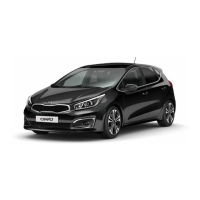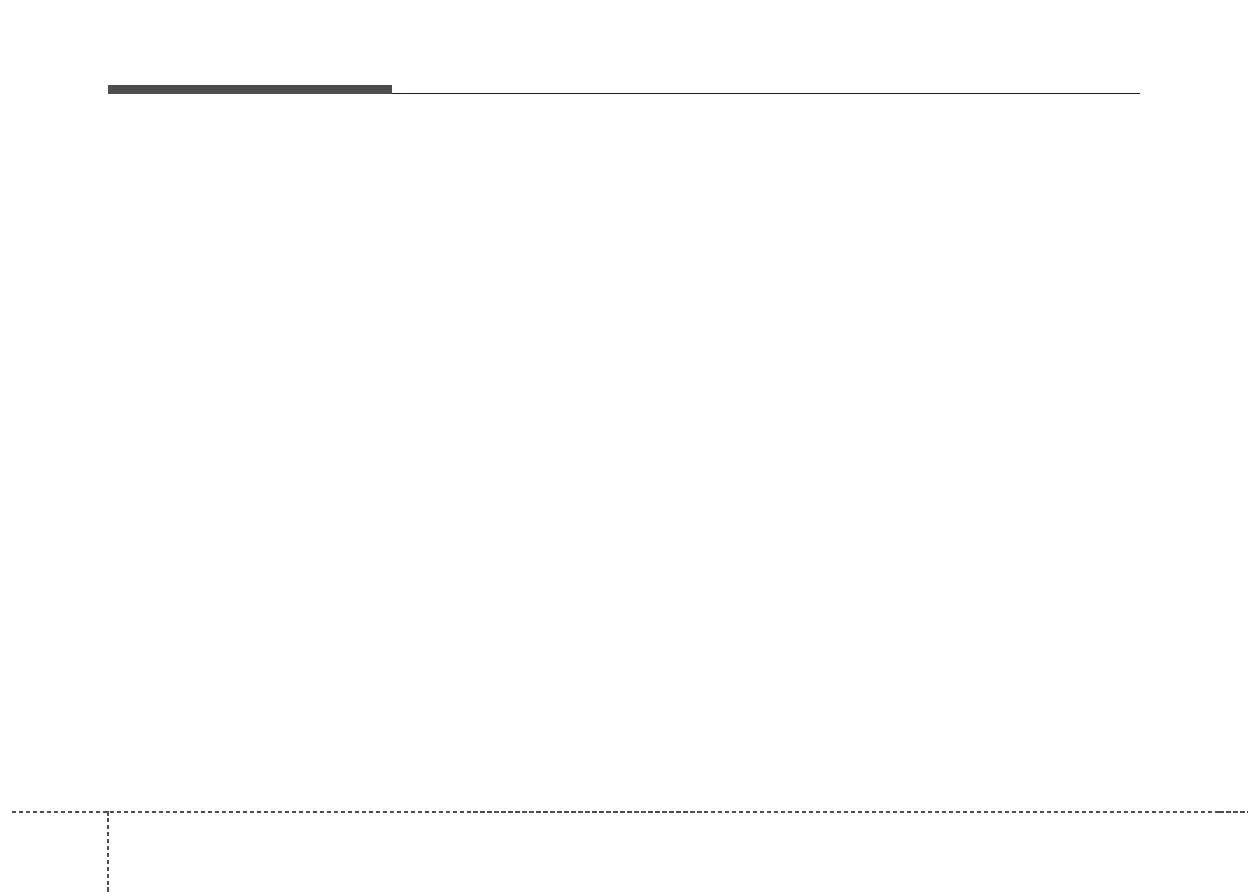Driving your vehicle
805
The BSD indicator on the outer side view
mirror may not illuminate properly when:
• The outside rearview mirror housing is
damaged.
• The mirror is covered with dirt, snow,
or debris.
• The window is covered with dirt, snow,
or debris.
• The window is tinted.
Driver’s Attention
The driver must be cautious in the below
situations, because the system may not
detect other vehicles or objects in certain
circumstances.
• The vehicle drives on a curved road or
through a tollgate.
• The vehicle is turning left or right at a
crossroad.
• The sensor is polluted with rain, snow,
mud, etc.
• The rear bumper where the sensor is
located is covered with a foreign object
such as a bumper sticker, a bumper
guard, a bike rack, etc.
• The rear bumper is damaged, or the
sensor is out of the original default
position.
• The vehicle height gets lower or higher
due to heavy loading in the luggage
compartment, abnormal tire pressure,
etc.
• The vehicle drives in inclement weath-
er such as heavy rain or snow.
• There is a fixed object near the vehicle,
such as a guardrail, person, animal,
etc.
• The vehicle is driven near areas con-
taining metal substances such as a
construction zone, railroad, etc.
• A big vehicle is near such as a bus or
truck.
• A motorcycle or bicycle is near.
• A flat trailer is near.
• If the vehicle has started at the same
time as the vehicle next to you and has
accelerated.
• When the other vehicle passes at a
very fast speed.
• While changing lanes.
• When going down or up a steep,
uneven road.
• When the other vehicle approaches
very close.
• When a trailer or carrier is installed.
• When the temperature near the rear
bumper area is high or low.
• When the sensors are blocked by other
vehicles, walls or parking-lot pillars.
• When the detected vehicle also moves
back, as your vehicle drives back.
• If there are small objects in the detect-
ing area such as a shopping cart or a
baby stroller.
• If there is a low height vehicle such as
a sports car.
• When other vehicles are close to your
vehicle.
• When the vehicle in the next lane
moves two lanes away from you OR
when the vehicle two lanes away
moves to the next lane from you.
• When driving through a narrow road
with many plants.
• When driving through a large area with
few cars or structures around, such as
a desert, rural area, etc.
• When driving on wet surface.

